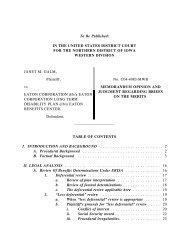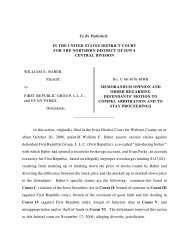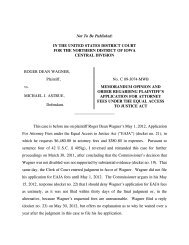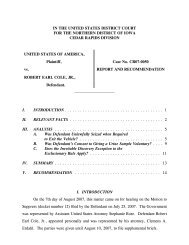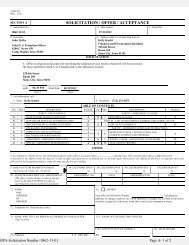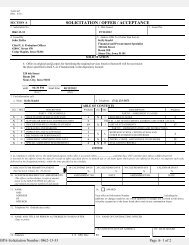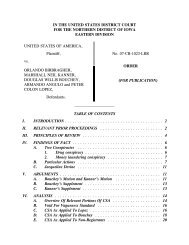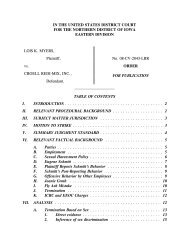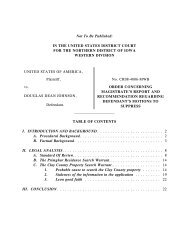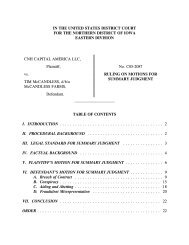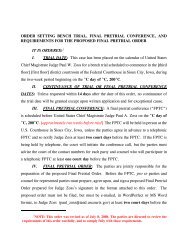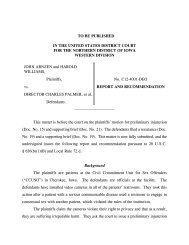Shannon v. Koehler - Northern District of Iowa
Shannon v. Koehler - Northern District of Iowa
Shannon v. Koehler - Northern District of Iowa
You also want an ePaper? Increase the reach of your titles
YUMPU automatically turns print PDFs into web optimized ePapers that Google loves.
incident.” (citing Schulz v. Long, 44 F.3d 643, 648 (8th Cir. 1995))). In evaluating the<br />
reasonableness <strong>of</strong> an <strong>of</strong>ficial’s conduct, a court must pay “‘careful attention to the facts and<br />
circumstances <strong>of</strong> each particular case, including the severity <strong>of</strong> the crime at issue, whether<br />
the suspect poses an immediate threat to the safety <strong>of</strong> the <strong>of</strong>ficers or others, and whether<br />
[the suspect] is actively resisting arrest or attempting to evade arrest by flight.’”<br />
McKenney v. Harrison, 635 F.3d 354, 359 (8th Cir. 2011) (citing Graham, 490 U.S. at<br />
396).<br />
I first address <strong>Shannon</strong>’s argument that not even the charges filed against him on<br />
September 13, 2006, are admissible. The Supreme Court has instructed that “the severity<br />
<strong>of</strong> the crime at issue” is relevant to determining the reasonableness <strong>of</strong> a police <strong>of</strong>ficer’s<br />
conduct. Graham, 490 U.S. at 396. The arresting charges against the plaintiff are <strong>of</strong>ten<br />
the appropriate basis for determining “the severity <strong>of</strong> the crime at issue.” See, e.g., Cook<br />
v. City <strong>of</strong> Bella Villa, 582 F.3d 840, 859 (8th Cir. 2009) (Shepherd, J., dissenting)<br />
(evaluating the severity <strong>of</strong> the <strong>of</strong>fense by examining the crimes with which the defendant<br />
<strong>of</strong>ficer charged the plaintiff—resisting arrest and interfering with an <strong>of</strong>ficer, which were<br />
eventually dismissed—and analyzing whether the plaintiff “meaningfully engaged in th[ese]<br />
<strong>of</strong>fense[s]”); Davis v. City <strong>of</strong> Albia, 434 F. Supp. 2d 692, 706 (S.D. <strong>Iowa</strong> 2006) (finding<br />
under Graham that, if the case had gone to trial, the plaintiff’s simple misdemeanor<br />
charges for interference with <strong>of</strong>ficial acts and assault <strong>of</strong> a peace <strong>of</strong>ficer might have<br />
indicated to the jury that the “severity <strong>of</strong> the crime” was low, though the court ultimately<br />
determined that the claim was barred by qualified immunity); see also Solomon v. Auburn<br />
Hills Police Dep’t, 389 F.3d 167, 174 (6th Cir. 2004) (arrest for trespass was the basis for<br />
determining “the severity <strong>of</strong> the crime at issue”). But see Brown v. City <strong>of</strong> Golden Valley,<br />
574 F.3d 491, 496 (8th Cir. 2009) (evaluating severity <strong>of</strong> the crime, where the plaintiff<br />
was charged with both an open bottle violation and obstruction <strong>of</strong> legal process, on the<br />
21



